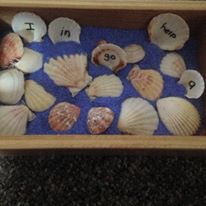Competency:
- Teacher will be able to design and implement an activity for students with exceptional learning needs.
Sensory is my passion. It is a powerful tool to support all students, as we learned about in Nan Stevens and Kim-Calder Stegemann’s academic paper on Sensory entitled, “The Need for sensory regulation methods in teacher education programs.” On Moodle, information on sensory smart classrooms was posted with readings and articles, and this made me reflect on my experiences with sensory while tying them Stevens’ and Stegemann’s paper.
My Sensory Program: The Power of Sensory in Learning
Sensory is a passion of mine as an educator, and my experiences leading a sensory program have shown me how its integration can create inclusive learning. I created a sensory program at Merritt Central Elementary school geared to students aged 5-9. The program consisted of two thirty-minute blocks in which eight children at a time rotated through different learning centers. My sensory activities helped children move and explore using their sight, touch, smell, taste, proprioception, and vestibular senses, as well as fine motor, gross motor, and life skills. The activities also had a strong focus in literacy and numeracy with a hands-on approach.
Through leading the program, I saw the power that hands-on sensory activities have on students, and the positivity created from learning by doing. Through incorporating these components, children were able to develop self-regulation, which proves “more important than IQ when it comes to predicting a child’s ability to do well in school” (Shanker, as cited in Stevens and Stegemann, 2016, p.9). Sensory fosters inclusion as it addresses “the unique needs of all students” (Brownell et al. as cited in Stevens & Staegemann, 2016, p.10). From witnessing students being regulated with the use of sensory learning activities, I saw firsthand the “significant” results in “establishing calm, alert, and focused students,” as outlined by Stevens and Stegmann (2016, p.15).
In addition, research shows that “improved academic outcomes” occur when students have access to sensory methods (Shanker, as cited by Stevens & Stegmann, 2016, p. 15). In the program I led, I witnessed children who struggled academically enjoy learning activities because of the sensory components they included. Ultimately, children learned their alphabet, sight words, numbers, and more.
Seeing how sensory integration can help students exceed has shown me how important it is to consider when supporting students. Stevens and Stegemann (2016) mention that “teachers and future students in inclusive classrooms will benefit greatly from these [sensory] innovative and effective practices” (p. 15). Consequently, I will incorporate sensory hands-on learning into all of my future classrooms.
References
Stevens, N. E., & Stegemann, K. (2016). The Need for sensory regulation methods in teacher education programs. In M. Hirschkorn & J. Mueller (Eds.), What should Canada’s teachers know? Teacher capacities: Knowledge, beliefs and skills. 568-586. Ottawa, On:Canadian Association for Teacher Education.




